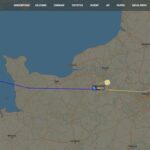
If you’ve ever watched a busy airport as the planes fly in and out, you’ve probably realized that there must be some very complex and precise processes involved in facilitating all of that air traffic. While the actually traveling takes place in the air, the real magic that makes each departure and arrival possible is handled by the ground crew. With that said, here are some of the steps that busy airports take to properly manage and streamline ground crew duties:
1. Advanced Fleet Management Technology
Every airport ground crew uses a fleet of various vehicle types to transport workers and equipment around the airport. Coordinating all of this vehicle movement in a safe and accurate manner requires the use of advanced fleet tracking and management software. Envue Telematics – https://envuetelematics.com/ – is one example of a fleet solutions provider that specializes in fleet vehicle technology for ground crew vehicles. Their comprehensive solutions give airports the ability to maintain precise control over the movement and utilization of their ground crews.
2. Predefined Procedures
Every airport ground crew relies on very specific procedures to ensure the accuracy of their actions and avoid mishaps. These procedures are governed by very strict schedules and ground crew are expected to follow established guidelines to a tee when directing ground traffic and maintaining planes and other equipment. In addition to maintaining a consistent approach to local procedures, airports also need to ensure that their protocols are compliant with regulations and in line with what pilots are accustomed to encountering.
3. Stringent Inspection Standards
Streamlining ground crew activity isn’t just about making processes flow faster and smoother, it’s also about ensuring top-notch safety along the way. To achieve this goal, ground crew controllers enforce a stringent set of inspection standards that must be upheld and verified by every shift manager and crew member. Every step is recorded and referenced against a checklist of criteria that must be met in order for planes and other equipment to be deemed safe for use according to FAA requirements. These inspections are carried out on a daily and hourly basis, so there are always designated employees who are tasked with overseeing this crucial aspect of ground crew management.
4. Extensive Employee Training and Testing
Ground crew members at all airports undergo extensive training and testing before they’re allowed to work in the field. Inexperienced workers are major liabilities when it comes to directing the traffic and maintenance of commercial airplanes. As such, most airports invest a great deal of money and effort into employee orientation programs like the kind provided by AAAE. This also means that most airports prefer to hire ground crew who already have some level of airport experience due to the risks associated with hiring amateurs.
Fleet Management is Easily the Most Important Part
When you consider the possibility of a plane colliding with a vehicle on the runway, the importance of having full control over the location of all ground crew vehicles becomes clear. Thus, new airports should approach their ground crew management from a “fleet first” perspective.






